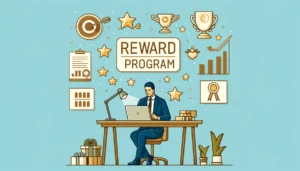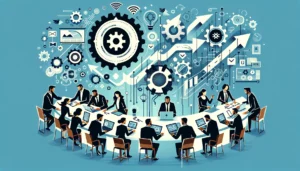HRD Roundtable - Recalibrating HR Services in the Human Experience Era
- 8 Min Read
The pandemic caught most organisations mid transformation. So how do companies adapt to the new ways of working we are experience now, without losing the investments made along the way in their transformation journey? The Human Experience is more personalised, seamless, and intuitive than ever. However, organisations continue to be challenged in maintaining the right […]
- Event Types
- Date of Event: Jun 30, 2022


The pandemic caught most organisations mid transformation. So how do companies adapt to the new ways of working we are experience now, without losing the investments made along the way in their transformation journey?
The Human Experience is more personalised, seamless, and intuitive than ever. However, organisations continue to be challenged in maintaining the right level of experience that is needed for today in the delivery of their HR services thanks to the rapid pace of changing expectations.
Now we must ask ourselves – do you scrap your transition plan, or do you recalibrate and find a way to stay dynamic?
Led by Simon Cunliffe, People Services Director, EasyJet, and supported by further insights from Michelle Hernandez, Vice President, Conduent, this discussion with senior HR leaders was conducted under Chatham House Rules. This report will contain the key discussion areas and all participants will be anonymised.
HR as a strategic decision maker
Many still see HR as a ‘warm and fuzzy’ or administrative part of the business. When it comes to strategic planning, many HR teams still are not invited to be at the table. How do we change this narrative and get HR seen as a strategic partner? HR leaders need to ensure they are fully tapping into the underlying strategies of what the business is trying to achieve and identify how HR can contribute. HR need to speak the same language as the business – understanding business goals and strategy and translate that into people goals and actions. They also need to open lives of communication with other leaders about their problems and discuss solutions. This will help get other leader invested in the people solutions available to their challenges and help them build ownership as well. If you keep asking these questions and making changes, eventually people will start coming to you.
Designing experiences
Every employee’s wants, needs, and lived experiences are different, and reflecting that in engagement and experience strategies is of course one of the common difficulties for experience teams. Personas were popular amongst the group as a starting point for first growing this understanding, then using that insight to develop further plans.
What does their day to day look like and what do they care about? What would make a difference and what motivates them? Once the messaging has been established, then further analysis can look at whether the program or product itself also needs changing. This can work as a form of stress testing – exploring how we think something will land and how to tailor it, rather than implementing and finding out it is not working later.
We should also think about the voice of the future employee – what does that persona look like? What will they want, and what will we need to create to meet that need? As one participant put it, ‘not every problem is a nail and not every solution is a hammer.’
Functional siloes block end to end delivery. Some organisations are finding success in developing a network approach to solve challenges like on-boarding for example. Where are the cross-functional moments that matter, where we can bring in different stakeholders and functional experts into teams/hubs to solve together and create more seamless experiences?
How do we identify these moments? We heard from one participant who is developing this with the aim to cover both the work and person lifecycle events that matter to people – like maternity, mobility, sickness. To do this they are pulling together the needs/aspirations of their leaders, insights from the data they have so far (where are the failure points, what story do we have so far), and the expertise of the various influencers on the experience journey (facilities, IT, finance) to help codesign experiences. Everyone has key metrics to drive accountability. This can be created at a global level, with local details and rollouts – helping cover different variations of language, generation, roles.
Measuring experiences
Sitting down and engaging with employees on a regular basis is the key method for understanding and ranking their engagement.
However, it is also vital to measure in the moment. Where were the areas of high effort in that process? We need to understand the measurement process itself as an effort though and ensure we are not detracting from the experience with long, in depth questionnaires etc. One participant suggested keeping to only 3 questions, then looking for obvious patterns in the data. Ideas can then be tested with a focus group, before being put back into the system – a real design thinking approach.
Another participant shared their experiment with asking their teams to describe their ideal experience of the future. What are the key words and how can we use them to create the narrative now? For example, if empowerment is key, what does that look like in practice? What should that do to approval processes? Once we have a set of principles in place, they can be applied to the wider lifecycle.
We often talk about making the employee experience more like the customer experience – bringing in the elements we experience as consumers into employee interactions. However, there needs to be a balance here as well. One participant shared their view that we need to be cautious with conflating these experiences as the employee relationship is much deeper and less transactional. They are not just a customer purchasing a product. Therefore, the moments that matter and the things they find impactful are different. On effort scores as well, we also need to think with nuance – if an employee has a high effort score on a customer interaction, that can be a good thing! That might be them going above and beyond and should be rewarded.
Complaint metrics are also a valuable source of information, and a culture of being open about experiences should be encouraged. It is ok to escalate a bad experience as that is how we find out what doesn’t work. Managers as well need to be empowered to remove these roadblocks for their teams.
Tailoring for remote
The conversation around remote and hybrid working is moving to be one around creating balance. Performance was generally improved by working from home, but there is value in social contact and how best to get that needs to be explored further. We also need to revisit our norms around the digital experiences we create – how do we organise video meetings for hybrid teams? Are we all scheduling calls back-to-back without breaks? Are we still easy to reach for clients and customers?
On-boarding came up as a key moment in the lifecycle and we heard from a participant that themselves was recently on-boarded fully remotely. They appreciated having set check-in periods to review the process (30/60 days), as well as additional meet ups including with senior leaders to have more casual conversations. This helped create more personal touchpoints for them within the business.
Non-office-based workers have different access needs that can be forgotten and have been highlighted during the shift to more remote work. Back to personas again – how do you access services when you’re customer facing during core working hours? Or without access to a computer? Are people happy to use their own mobile devices or do we need to provide something else?
What’s next?
The conversation around services is coming back around to the personal touch. For a long while, teams have focussed on digitisation and technology – tools like chatbots for example. But now, we see that that can only be one layer to the experience. When you have a real issue, you do not want to talk to a robot, you want a person! However, there can be real convenience in skipping the human requirement – what if you want to access a service during unsociable hours? The goal needs to be a balance between digital, automation and real interaction, and we need to allow people to make that choice for themselves.
Tools mentioned during the Roundtable
A closing note from Michelle Hernandez, General Manager, Human Capital Solutions, Conduent
A big thank you to all the participants of today’s roundtable providing inciteful and critical content in recalibrating HR services and the essential role HR plays A key thread throughout the roundtable is about “connecting with people where they are” ensuring that their needs are addressed, and at the same time providing a strategic focus around “what problem is try to be solved” – as talent is critical to solving that problem in all businesses and organisations. It will be an ongoing discussion.
About Conduent
The future of work is about supporting rapid change, responding to market dynamics, increasing employee engagement, and improving efficiency. It’s about bringing HR costs down and lifting ROI up. At Conduent, we’re executing the future of work right now — across 80 countries and for one-third of the Fortune 100. Delivering outsourced mission-critical HR solutions across health & wellness, wealth & retirement, learning, human capital management, and global payroll with remarkable results.








